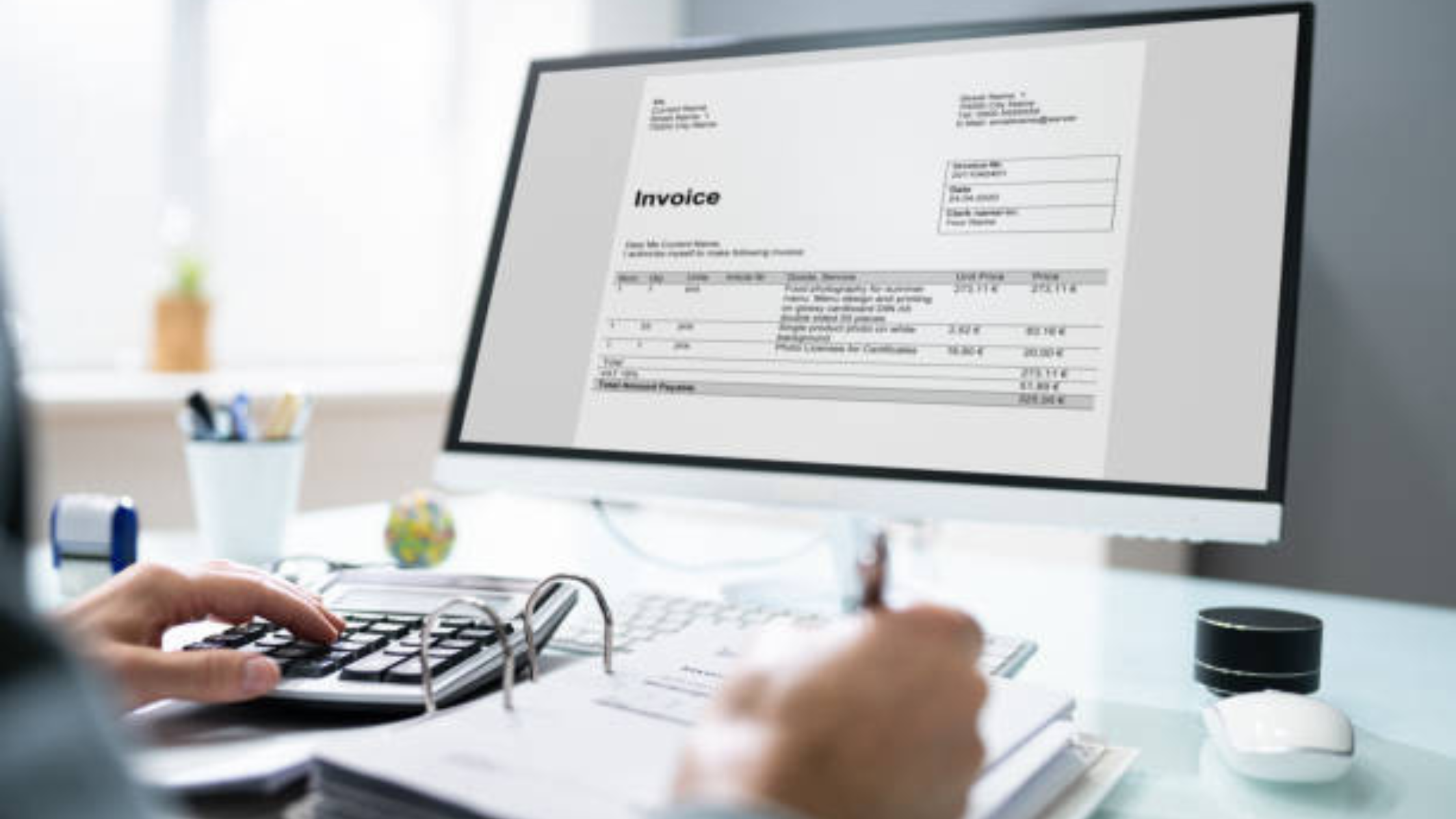Efficient Stationary Store Bill Generation

Enhancing Retail Operations with Advanced Technology
Streamlining the retail process, ensuring accuracy, and enhancing customer satisfaction are paramount in today's competitive market environment. Optimizing system efficiencies can significantly impact operational success and profitability. Through the integration of advanced technology and software solutions, businesses can automate processes, reduce errors, and enhance transaction speed, ultimately improving the overall shopping experience. This exploration will delve into key strategies, tools, and best practices for implementing advanced systems in retail environments, driving growth and success in the sector.
Challenges in Manual Billing
Human Errors
Manual billing processes are prone to human errors, such as typos, miscalculations, and incorrect data entry. These errors can lead to financial discrepancies and impact the overall accuracy of billing records. Implementing manual verification processes can help reduce the occurrence of such errors, but it still remains a challenge to completely eliminate them.
Time-Consuming Process
Manual billing is a time-consuming process that requires significant manpower to create invoices, verify information, and send out bills. This inefficiency can slow down the billing cycle and delay revenue collection. Additionally, the manual handling of each billing task can lead to inefficiencies in workflow and resource allocation, further contributing to delays in the billing process.
Difficulty in Record-Keeping
Maintaining manual billing records can be challenging, especially as the volume of transactions increases. Organizing and storing paper-based invoices and receipts can lead to document management issues and make it difficult to retrieve information when needed. Implementing a proper filing system and investing in digital record-keeping solutions can help streamline the process and improve accessibility to billing information.
Lack of Scalability
One of the major challenges of manual billing is its lack of scalability. As a business grows and the number of transactions increases, manual billing processes become increasingly burdensome and prone to errors. This can hinder the ability of the organization to efficiently manage billing operations and adapt to changing business needs. Implementing automated billing systems can help address this challenge by providing scalability and efficiency in handling billing tasks.
Compliance Risks
Manual billing processes may also pose compliance risks, especially in industries with strict regulations regarding billing and invoicing. The manual entry of data increases the likelihood of errors, which can result in non-compliance with regulatory requirements. To mitigate these risks, businesses need to implement robust quality control measures and ensure that their billing processes adhere to relevant regulations and standards.
The challenges associated with manual billing highlight the need for businesses to reconsider their billing processes and explore more efficient and reliable alternatives. By addressing issues such as human errors, time-consuming processes, difficulty in record-keeping, lack of scalability, and compliance risks, organizations can streamline their billing operations, improve accuracy, and enhance overall efficiency.
Benefits of Automated Bill Generation
Automated bill generation is a pivotal aspect of modern business operations, offering a wide array of advantages that can significantly enhance a company's efficiency and customer service. Let's explore the numerous benefits that automated bill generation brings to businesses:.
- Enhanced Accuracy in Calculations
One of the primary advantages of automated bill generation is the heightened accuracy it provides in calculations. By removing the possibility of human error in manual data entry, automated systems ensure that billing amounts are calculated precisely and consistently. This not only minimizes the occurrence of billing errors but also instills confidence in customers regarding the accuracy of their invoices.
- Improved Efficiency in Workflow
Automating the bill generation process streamlines workflows and boosts operational efficiency within a business. Tasks that previously required significant time and effort can now be completed swiftly and seamlessly, enabling employees to focus on more strategic responsibilities. This efficiency not only saves time but also optimizes resource utilization, allowing the workforce to dedicate their efforts to core business activities.
- Elevated Customer Experience
Automated bill generation plays a crucial role in enhancing the overall customer experience. By delivering bills promptly and accurately, businesses can foster greater customer satisfaction. Clear, error-free invoices contribute to a positive perception of the company and demonstrate professionalism in financial transactions. Customers appreciate the convenience of receiving accurate bills in a timely manner, which in turn cultivates loyalty and trust in the brand.
- Cost Savings and Scalability
In addition to accuracy and efficiency, automated bill generation offers cost-saving benefits to businesses. By reducing manual labor and the potential for errors, companies can lower operational costs associated with billing processes. Furthermore, as businesses grow and expand, automated systems can easily scale to accommodate increased billing volumes without compromising accuracy or speed.
- Data Insights and Analysis
Another advantage of automated bill generation is the wealth of data insights it provides. By capturing and analyzing billing data, businesses can gain valuable information regarding customer preferences, payment trends, and revenue patterns. These insights enable informed decision-making and strategic planning, allowing organizations to tailor their services and offerings to meet customer needs effectively.
In summary, the adoption of automated bill generation systems represents a transformative step towards operational excellence and customer-centricity for businesses. From accuracy and efficiency to enhanced customer experience and cost savings, the benefits of automated billing extend far beyond streamlined processes, paving the way for sustained growth and success in a competitive market landscape.
Features of an Efficient Stationary Store Bill Generator
An efficient stationary store bill generator plays a crucial role in streamlining the billing process and enhancing customer satisfaction. To achieve this, the generator must incorporate a range of features to meet the needs of both the store owners and customers.
User-Friendly Interface
First and foremost, a user-friendly interface is essential for easy navigation and efficient billing. A clean layout, intuitive design, and easy-to-use features contribute to a seamless experience for both store employees generating bills and customers reviewing their purchases.
Customizable Templates
Customizable templates are another key feature that allows the store to tailor the look and feel of the invoices according to their branding. This personalization not only enhances the professional image of the store but also fosters brand recognition among customers.
Integration with Inventory Management Systems
Integration with inventory management systems is a critical aspect that ensures accurate itemized billing. By syncing with the inventory, the bill generator can automatically fetch product details, prices, and quantities, eliminating manual data entry errors and saving time.
Multiple Vendors and Payment Options
Moreover, the ability to integrate with multiple vendors and offer various payment options provides flexibility and convenience to both the store and customers. Supporting different payment methods such as credit cards, digital wallets, and cash helps cater to a diverse customer base.
Easy Customization of Invoice Details
To further enhance efficiency, the bill generator should allow easy customization of invoice details such as adding discounts, notes, or special instructions. Multiple templates for different types of invoices, like sales invoices or purchase orders, enable the store to generate the appropriate document for each transaction.
Robust Customer Support
Robust customer support is indispensable for addressing any issues or queries related to billing. Having prompt assistance available ensures smooth operations and builds trust with customers.
Data Security Measures
In addition, ensuring data security is paramount for protecting sensitive customer information and maintaining compliance with data protection regulations. Implementing encryption protocols and secure storage practices safeguards the confidentiality and integrity of the billing data.
Conclusion
An efficient stationary store bill generator should offer a user-friendly interface, customizable templates, seamless integration with inventory management systems, support for multiple vendors and payment options, easy customization of invoice details, robust customer support, and stringent data security measures. By incorporating these features, the generator can streamline the billing process, enhance customer experience, and contribute to the overall efficiency of the store operations.
Implementation Steps for Stationary Store Bill Generator
Assessing Business Needs
Before implementing a bill generator software for a stationary store, it is crucial to assess the business needs. Start by examining current billing processes to identify inefficiencies or bottlenecks that the new software can address. This process involves consulting with store managers, staff members, and even customers to gather feedback on what improvements they would like to see in the billing system. By understanding the specific requirements and pain points of the business, you can tailor the software implementation to meet these needs effectively.
Training Staff on Software Usage
Training staff on how to use the new bill generator software is a critical step in ensuring a smooth transition. Develop a comprehensive training program that includes hands-on sessions, instructional guides, and access to a support system for any queries that may arise. Emphasize the importance of accuracy in billing, data entry protocols, and security measures to protect customer information. Regular refresher courses and skill assessments can help maintain proficiency among staff members and optimize the software's utilization.
Testing and Integration
Thorough testing and integration are vital to the successful deployment of a bill generator software. Conduct rigorous testing to identify and resolve any bugs, errors, or inconsistencies in the system. Run simulations and trial scenarios to evaluate the software's performance under various conditions and workloads. Ensure seamless integration with existing systems such as inventory management, accounting software, and point-of-sale terminals to facilitate data sharing and streamline operations. Collaborate with IT specialists and software developers to address any compatibility issues and optimize the software's functionality.
Continuous Improvement
The implementation of a bill generator software is not a one-time task but an ongoing process of improvement. Encourage feedback from staff and customers to gather insights on the software's performance and usability. Regularly review and update the software to incorporate new features, enhance security measures, and address evolving business needs. Stay informed about advancements in billing technology and industry best practices to remain competitive and efficient in managing store operations.
Importance of Data Security
Data security is paramount when implementing a bill generator software. Ensure that the software complies with industry standards for data protection and privacy. Implement encryption protocols to safeguard sensitive customer information and transaction data. Regularly audit the software for vulnerabilities and update security measures to mitigate potential risks. Educate staff on the importance of data security practices and establish protocols for handling and storing confidential information securely.
Customer Satisfaction and Engagement
Enhance customer satisfaction and engagement through the bill generator software. Implement features that improve the overall shopping experience, such as personalized billing options, loyalty program integration, and promotional offers. Gather feedback from customers on their billing preferences and incorporate customization capabilities into the software. Use customer data collected through the billing system to tailor marketing strategies and enhance customer relationships. Engage with customers through automated billing notifications, feedback surveys, and special discounts to foster loyalty and retention.
Scalability and Flexibility
Consider the scalability and flexibility of the bill generator software to accommodate future growth and changes in business operations. Choose a software solution that can expand to support additional store locations, increased transaction volumes, and new product lines. Ensure that the software architecture is modular and easily customizable to adapt to evolving business requirements. Collaborate with software vendors to explore upgrade options, cloud-based solutions, and integration possibilities with other business tools to enhance operational efficiency and scalability.
Compliance and Reporting
Maintain compliance with regulatory requirements and reporting standards when using a bill generator software. Ensure that the software generates accurate and detailed billing reports for auditing and financial analysis. Stay informed about tax regulations, invoicing guidelines, and record-keeping practices to avoid legal issues and financial penalties. Implement automated compliance checks and alerts within the software to flag any discrepancies or non-compliance issues. Regularly review reporting functionalities and customize report templates to meet specific business needs and compliance obligations.
Conclusion
The successful implementation of a bill generator software for a stationary store requires careful planning, thorough training, and continuous improvement strategies. By addressing business needs, ensuring data security, enhancing customer satisfaction, and prioritizing scalability and compliance, store owners can streamline billing processes, optimize operations, and drive business growth. Stay proactive in monitoring software performance, gathering feedback, and adapting to industry changes to maintain a competitive edge in the market. Embrace technological advancements and best practices to transform billing operations and deliver exceptional service to customers.
Section: Future Trends in Stationary Store Billing
It has become crucial for stationary stores to keep up with the latest trends in billing to ensure smooth operations and customer satisfaction. Let's delve deeper into the future trends that are shaping the stationary store billing industry.
- AI-Powered Billing Solutions: The Rise of Automation
AI-powered billing solutions are at the forefront of transforming the way stationary stores handle transactions. These cutting-edge systems leverage artificial intelligence to automate billing processes, manage inventory effectively, and offer valuable insights for store owners. By embracing AI-powered billing solutions, stationary stores can streamline operations, minimize errors, and significantly enhance overall efficiency. The future holds exciting possibilities as AI continues to revolutionize the billing landscape.
- Mobile Billing Applications: Convenience at Your Fingertips
As smartphones increasingly dominate the tech scene, mobile billing applications are rapidly gaining traction among stationary stores. These user-friendly apps enable customers to make swift and secure payments using their mobile devices, eliminating the hassle of traditional payment methods. Moreover, mobile billing applications can provide personalized promotions, facilitate loyalty programs, and deliver digital receipts instantaneously, thereby elevating the shopping experience for customers. Embracing mobile billing applications represents a strategic move for stationary stores looking to adapt to changing consumer preferences and enhance operational efficiency.
- Data Analytics: Driving Informed Decision-Making
In addition to AI and mobile applications, data analytics is poised to play a pivotal role in the future of stationary store billing. By harnessing the power of data, store owners can gain valuable insights into customer behavior, preferences, and purchasing patterns. This data-driven approach enables businesses to tailor their billing strategies, optimize inventory management, and offer targeted promotions that resonate with their clientele. The integration of data analytics not only enhances operational efficiency but also empowers stationary stores to make informed decisions that drive growth and profitability.
Embracing these future trends in stationary store billing is imperative for businesses seeking to remain competitive in a dynamic market landscape. By leveraging AI-powered billing solutions, mobile billing applications, and data analytics, stationary stores can not only enhance customer satisfaction and drive sales but also position themselves for sustained success in an increasingly digital world.
Conclusion
Implementing an efficient stationary store bill generation system can significantly streamline operations, reduce errors, and enhance overall customer satisfaction. By leveraging technology and automation, businesses can save time, improve accuracy, and ultimately increase profitability. Embracing innovation in this aspect of retail management can lead to long-term success and growth for stationary stores of all sizes.







